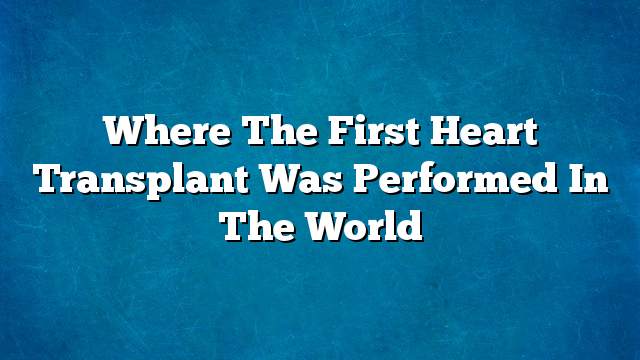the heart
The heart plays important functions in the body. It is responsible for the exchange of blood between the cells, where blood carrying food and oxygen is transported to the cells of the body, and the waste and carbon dioxide are removed from the cells and thrown out of the body.
But the heart may suffer some disorders that affect his ability to perform his work, which requires a new heart transplant instead of the heart patient, and of course, doctors resort to this solution when the failure of treatment with medicines and medical treatments.
First heart transplantation
The first heart transplant was performed in South Africa in 1967 and was performed by African physician Christian Bernard with the help of 30 doctors. The operation lasted for nine hours. Bernard replaced the heart of a 55-year-old man who was suffering from diabetes with the heart of a woman who died of A traffic accident, but the man did not last long and died 18 days after the operation.
How to perform a heart transplant
The process of donation of a healthy heart from a person who died recently for reasons not related to heart disease, and often searching for people who died because of brain death, and the process of transplanting the heart steps:
- The surgeon completely sterilizes the chest area, then cuts the breast lengthwise along the shear bone, separating the bone to reach the chest bones completely.
- The doctor replaces the heart of the patient and the lungs with a cardiac-pulmonary heart-lung system, in order to maintain proper blood circulation. Some cells of the body if not received by blood for minutes die and may cause many problems later.
- The doctor completes the transplantation of the new heart instead of the old heart after it is around the circulatory pathway through the cardiovascular system. The doctor stimulates the blood to change its path through the major blood vessels such as the aorta and pulmonary veins to the device for a short period to ensure that the blood carrying oxygen and food Cells, purify the blood of toxins.
- The doctor removes the diseased heart by opening the outer membrane, leaving only one of the atria to reach the new heart, and then stitches the large blood vessels on both ends (in the new heart and the remaining part of the old heart).
- The doctor stimulates blood circulation to walk through the new heart, then closes the heart membrane and then stitches the chest.
- The doctor places several external tubes in the patient’s chest for fluid and excess blood flow in the tissues, and a set of medications that remove the side effects of the procedure.
